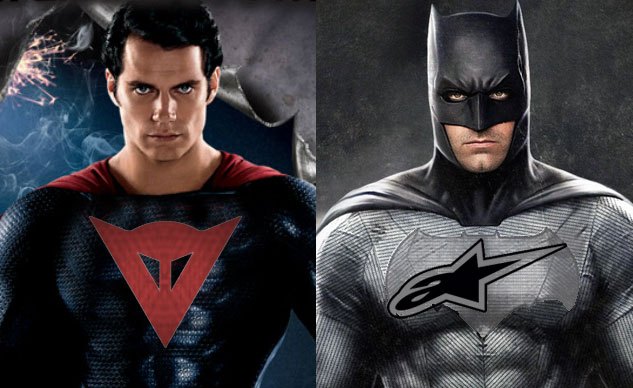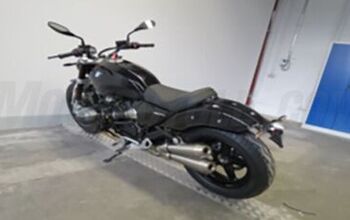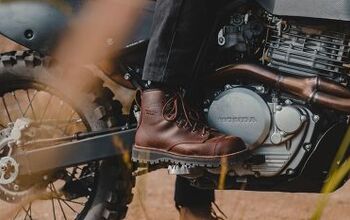Airbag Battle: Alpinestars V Dainese
Airsuits and lawsuits
Italy’s two biggest manufacturers of motorcycle safety gear are embroiled in a lawsuit over a thing that’s affected us barely at all, so far, but that actually could be a very big deal going forward: It’s all about the future of airbag tech as it applies to motorcycle gear. Right now, the suit is wending its way through the Italian legal system and possibly the German one, depending on whose press release you believe.
Dainese seems to have struck out at Alpinestars first, claiming patent infringement, which Alpinestars denied while making some counter-accusations, and away we go. The most recent legal barrage came from Dainese December 29:
STATEMENT REGARDING DAINESE LAWSUITS AGAINST ALPINESTARS
VICENZA, Italy (Dec. 29, 2015) – With respect to Alpinestars’ “Statement regarding press coverage of Patent Challenge,” and for the sake of clarity, Dainese deems it necessary to reply to the following claim:
“In Germany, Dainese did make a direct request to certain retailers, that they cease and desist from offering for sale the Alpinestars Tech-Air Street system, however, no legal action has been taken against Alpinestars.”
In fact:
- In October 2015, the Court of Munich released two autonomous preliminary injunctions against a German Alpinestars dealer, confirming that the Alpinestars Tech-Air system infringes two Dainese patents in Europe.
- Dainese has also recently filed, before a German Court, an additional lawsuit against Alpinestars, seeking compensatory damages for infringement of Dainese’s patents and the halting of commercialization of the Tech-Air system in Germany.
In addition, Dainese would like to clarify that:
- Dainese has never received a cease-and-desist letter from Alpinestars.
- Dainese has filed a lawsuit against Alpinestars before an Italian court, seeking compensatory damages for infringement of Dainese’s patents, as well as an urgent preliminary injunction for halting the commercialization of the Tech-Air system in Italy.
- Dainese’s patents have been released by the European Patent Office following a long verification procedure, and are therefore registered and fully valid.
At this time, Dainese will not comment further on the merit of those lawsuits, instead preferring to discuss them in the appropriate venues.
Dainese’s release goes on to literally underline that it’s been the leading innovator of all kinds of protective sporting gear since Lino Dainese founded the company in 1972, including the D/air airbag system, which he conceived in 1995. Dainese claims it owns 26 distinct D/air technology patents.
Alpinestars first airbag system appeared in 2010, and it launched its Tech-Air Street system in November, 2014, touting it as the world’s first self-contained street airbag system that functions independently without the need for sensors to be installed on the bike or the need to link a specific motorcycle to the airbag system. So far, Tech-Air Street isn’t available in the U.S.
Dainese did finally launch its D/Air system in the U.S. last June, and currently sells two D/Air Racing suits: The Misano is an off-the rack cowhide number, the Mugello is made-to-measure in kangaroo leather. Both are not inexpensive, and both are just like the leathers Dainese provides for guys like Valentino Rossi.
Chris Jonnum, Dainese’s U.S. spokesperson, also reminds us that the company makes D/air technology for the road in two versions – one that requires sensors on the bike, and another more recent system that is completely self-contained. Neither of these is yet available in the U.S., but both are expected to launch here sometime in 2016.
The reason you should care is this: Dainese sponsors 16 MotoGP, Moto2 and Moto3 riders, three World Superbike ones and one World Endurance rider. In MotoGP, as of last June, it reported that riders not wearing its D/Air suit had suffered 23 shoulder fractures and 29 broken collarbones. D/Air riders, in the meantime, have suffered zero shoulder fractures and one broken collarbone. That’s not exactly scientific, but it’s close enough to give you a good idea of the relevance of these products and the potential for future sales. It’s conclusive enough that a couple of other leather manufacturers have partnered up with Dainese to include the D/Air system in their suits.
Meanwhile, there’s no way of knowing whether Marc Marquez’s Alpinestars Tech-Air suit is what saved his bacon when he came off at 209.9 mph at the Italian MotoGP two years ago, but it probably didn’t hurt.
For now, both the A-stars and Dainese systems only protect the rider’s shoulder and neck area, which are the critically important ones, but who knows what the future might bring? Automobiles began with frontal airbags only, but have sprouted them all over now; we don’t want to get into how many injuries and deaths they’ve prevented.
Obviously, for motorcycle racers and street riders concerned about safety, motorcycle airbag tech has tremendous potential, which of course spells tremendous profits for whoever “owns” the technology. We hope they hash it all out soon for the benefit of all us who might stand to benefit from it. In the meantime, we’ll keep you posted.
Related Reading: History of MO’s airbag reporting
Dainese Inflatable Vest
2010 Alpinestars Electronic Airbag Technology
2010 Dainese Lineup Unveiled
Dainese D/Air Race Suit Announced
Dainese to Preview D/Air Street Airbag System at EICMA
Alinestars Tech-Air Race Suit Wins PopSci Best Of What’s New Honor
Dainese D/Air Racing Leathers Make US Debut
21st Century Technology
Dainese Reveals D/Air Racing Thorax
Alpinestars Releases Jorge Lorenzo Tech-Air Data
Dainese and Peugeot Scooters Together for Enhanced Safety
Alpinestars Introduces The Tech-Air Street Airbag System + Video
2014 Ducati Multistrada 1200S Touring D/Air Revealed
D/air Armor From Dainese
BMW Developing Jackets with Alpinestars Tech-Air Airbag Technology
Dainese D|air Racing Available Stateside In September
More by John Burns































Comments
Join the conversation
Interesting stats for an interesting product. I wonder if they can make this low-profile enough that the do-rag and chaps crowd will get interested.
To merely own patent technology that works well does not ensure tremendous profits. A patent keeps other people off your property, but does not foreclose other means to accomplish a given objective.
For example, if JB were to buy a 60 foot wide real estate parcel from his home to LAX, people could not travel over John's property to get to the airport unless he gave them permission to do so (i.e., paid a toll for that right). Nevertheless, John would not make much money because there would remain innumerable alternative free paths to LAX. Were John able to buy enough real estate such that all routes to LAX had to cross his property, he would reap huge profits through licensing fees (tolls in this case).
Thus, a saavy patent portfolio strategy does not merely patent one way to do something (e.g., get to the airport, or deploy an airbag in a motorcycle suit), but patents all the ways to do it such that anyone who wants to use the technology has to pay a fee. This is why 90-something percent of patents are never implemented (practiced). These dormant patents serve merely to block alternative means to accomplish a given objective. In the real estate example above, much of the property JB purchased to foreclose all routes to LAX would not include roadways or generate fees. Nevertheless, this dormant real estate would force people to take roads that required travelers to pay JB a fee, and he would reap massive profits.
Companies such a Qualcomm have made billions implementing this strategy. Due to Qualcomm's massive patent portfolio, it's impossible to make a mobile telephone for use in the U.S. without paying significant monthly fees to use Qualcomm patents. I have no idea whether any company has a sufficient patent portfolio to dominate motorcycle-related airbag technology. Hopefully not! Competition reduces consumer prices.